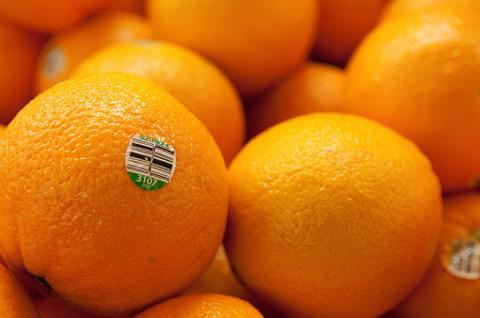Heat wave in San Joaquin Valley has kept fruit size small this season, resulting in only a forecast 2 per cent increase in cartons on last season
The 2024 California navel crop is forecast at 78mn cartons (18 kg), marking an increase of approximately 2 per cent over last season. The estimate, issued by the California Department of Food and Agriculture (CDFA) in early September, also noted that the average fruit set was one of the highest in several years at 414 oranges per tree. The CDFA said the average diameter of the fruit was measuring just 2.063 inches (5.24 cm) – the smallest for the date this century. A heavy fruit set in the orchards is often a reason for small-sized fruit but another factor is evidently at play here.

“This was one of the hottest summers we’ve ever seen here in the (San Joaquin) Valley,” said long-time California citrus hand, Tom Wollenman, in mid-October. “It started in July and never really let up. That kind of persistent heat eventually shuts down tree metabolism and the fruit just quits growing.”
Most industry observers feel that if it wasn’t for the extended heat wave, 2024 California navel volume would have been even larger but as it takes more fruit to fill a carton when the size curve runs small, the forecast is up only slightly from last season – at least at this point.
“The next six weeks or so will be a critical period for (fruit) growth,” advised Wollenman. “If we have mild to moderate daily temperatures, the oranges can size up significantly. But as it stands now, 56 and 72 counts will be at a premium to start the season.”
The heat also has caused a higher incidence of sunburn in the navels as well as for other winter citrus.
“Other varieties usually parallel what’s going on with navels,” said Wollenman. “Fruit with high levels of burn will get diverted to the processed market, which won’t be a problem this year as prices are strong with the Valencia deal ending fairly early. Imports are also winding down now so there is bit of a gap in development for citrus in North America and prices should be strong to start the navel season.”
Another positive aspect to the 2024 California navel season is that fruit cosmetics are much improved over last season when there was extensive scarring from citrus thrip – a small orange-yellow insect that feasts orange rinds. Evidently, valley growers were delayed in spraying for the pest last year due to winter rains that extended well into the first weeks of spring. The result was an explosion in the thrip populations across the San Joaquin Valley where the majority of the state’s navels are grown, leaving as much as 30 per cent of the fruit unsaleable for the fresh market.
“Fruit appearance is much improved over last year and there is virtually no thrip damage to speak of,” noted Wollenman. “In general, there is very little evidence of insect damage in the fruit this season.”
The first fruit of the 2024 season will likely be packed by the end of October or early in November, according to industry sources. Volume will increase depending how soon the nights turn cool in the valley to bring on natural color and reduce ethylene gassing. The other factor determining fruit availability is sugar levels, which reportedly were running at a high level in the weeks leading up to the harvest.
The full version of this story will feature in the November edition of Asiafruit Magazine






